Sashiko stitching requires rhythm. Up, down, forward motion — with a threaded needle in one hand and cloth in the other, one hand pricks while the other hand guides. Both hands move in unison, creating lines of stitches that run straight or meander into waves and coalesce into stunning designs.

Image from here
Growing up, I was mesmerized by the simple beauty of sashiko stitching. But when I asked my grandmother if she would teach me how to stitch, she looked at me with a “why would you want to learn that” look and that was the end of it. Later, when I told my parents I was learning sashiko, my dad’s first reaction was, “do you want to make cleaning rags?” While I saw sashiko as art, my Japanese family saw it as utilitarian — a household chore.

Image and caption from here
Mottainai and More Than a Decorative Art
Sashiko is a traditional Japanese hand-stitching process with roots in poor and rural communities. It was born out of necessity — a way to reinforce, repair, and recycle scarce clothing and cloth. The stitches strengthened layers of cloth to make it more durable and delay the need for mending. When clothing repairs were eventually needed, cloth scraps were stitched on top of old stitches. When clothes were beyond repair, they were recycled for other uses. Cloth was precious, so waste was not an option!
Indeed, sashiko embodies the concept of mottainai or not wasting what is valuable or precious. The idea is to appreciate what you have and think about how you can preserve it and make it last. For example, instead of looking at an old pair of ripped jeans as something that should be tossed out, think about how it can be revitalized and transformed.
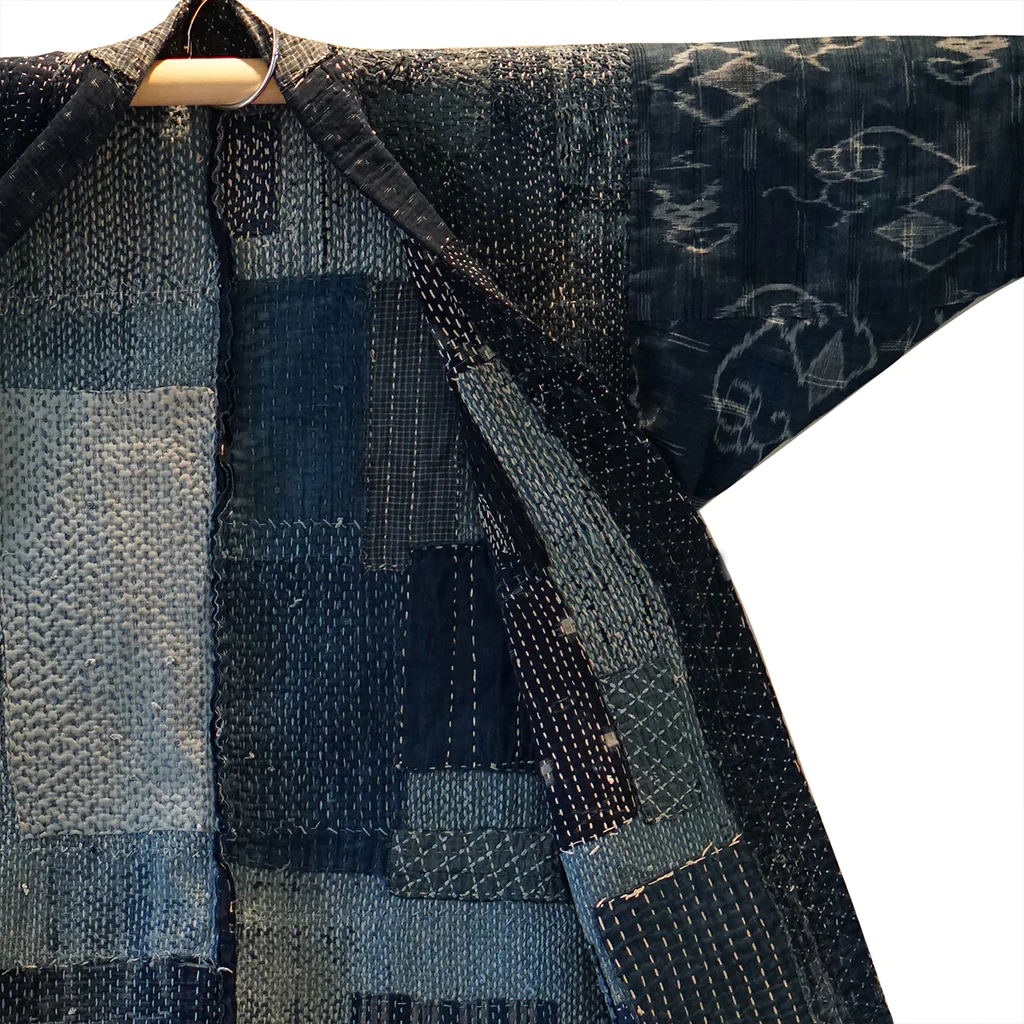
Image from here
The Beauty of Sashiko
What amazes me is how historically, this necessary chore was often done with such care and creativity. Perhaps the women thought that, “if I need to stitch, I want to make it pretty”. Or maybe they saw the value of the work they were doing and wanted to do their best. Regardless of the reason, these women crafted works of art with just a threaded needle and plain cloth.
Today, the craft has gained popularity and recognition worldwide. Some people are drawn to it from a sustainability perspective as a rejection of “throwaway culture”. Others are attracted to its artistic merits. But I think sashiko is more than a decorative art form or a mending method. It also represents a way of viewing the world — appreciating the things around us, even those that are old, worn, and imperfect, and seeing their potential beauty.
Below are a couple of gorgeous examples of modern sashiko from Upcycle Stitches, a company founded by Japanese sashiko artisans. In addition to design work, they offer workshops and very informative articles. It is a very comprehensive resource!
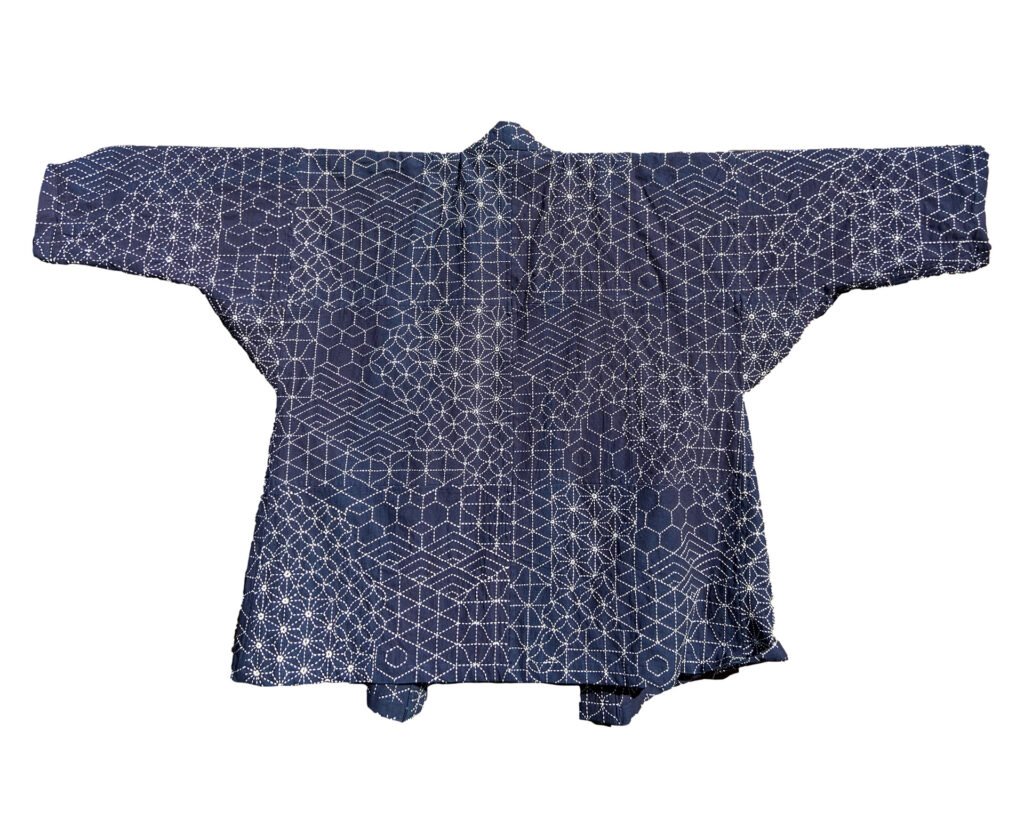
Image from here
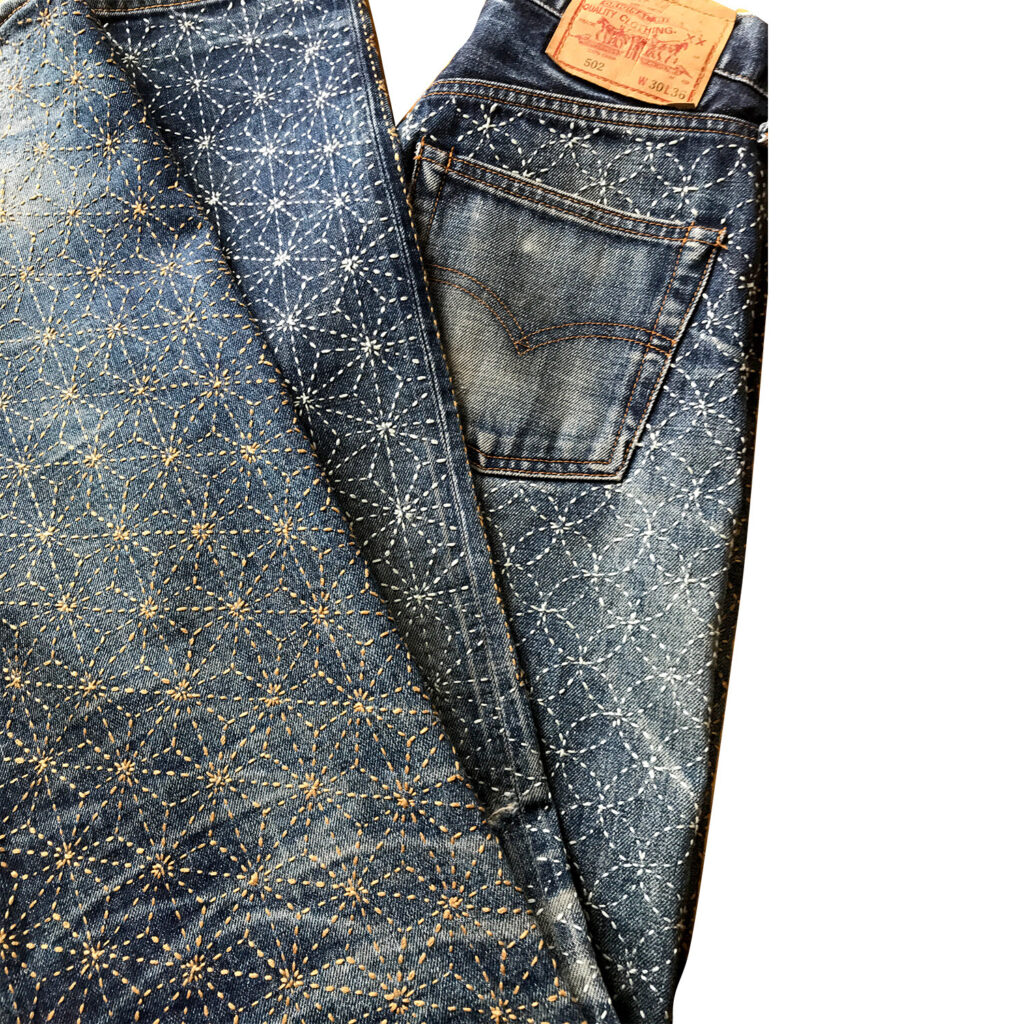
Image from here
Resources
Informational Website: Upcycle Stitches
Textile Society of America Symposium Proceedings: Transformative Power of Stitchery: Sashiko from Cold Regions of Japan and Embroidery Work of the Nui Project
Textile Society of America Symposium Proceedings: Sashiko: A Stitchery of Japan
Selvedge Magazine article: Sashiko and Mending
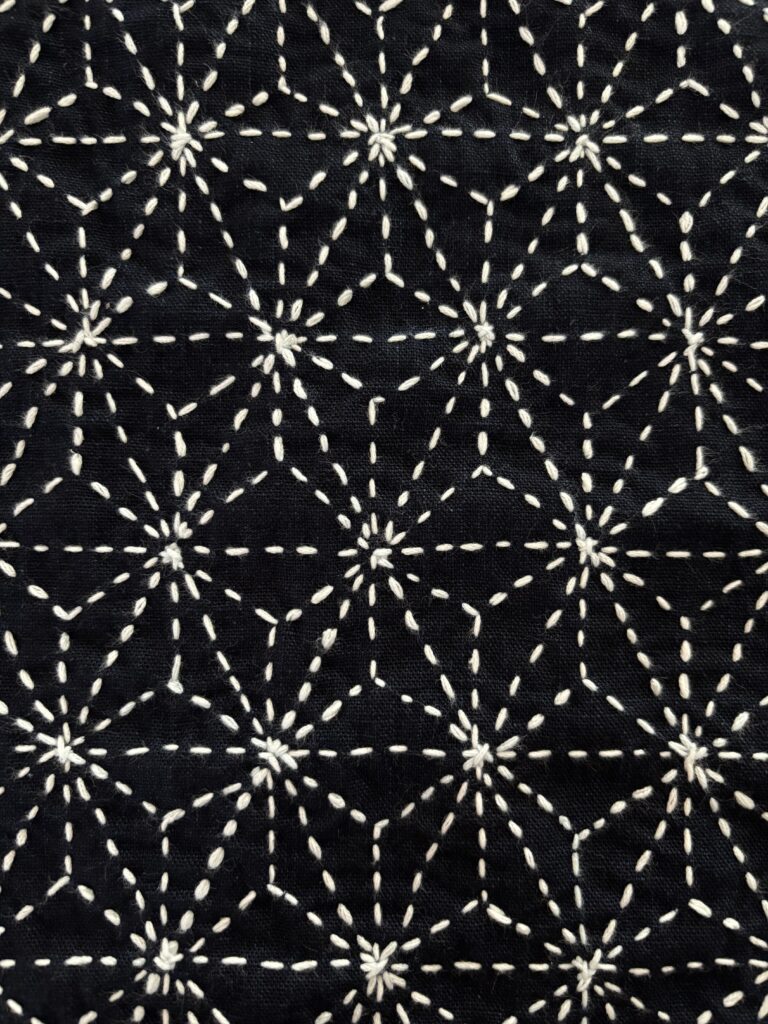
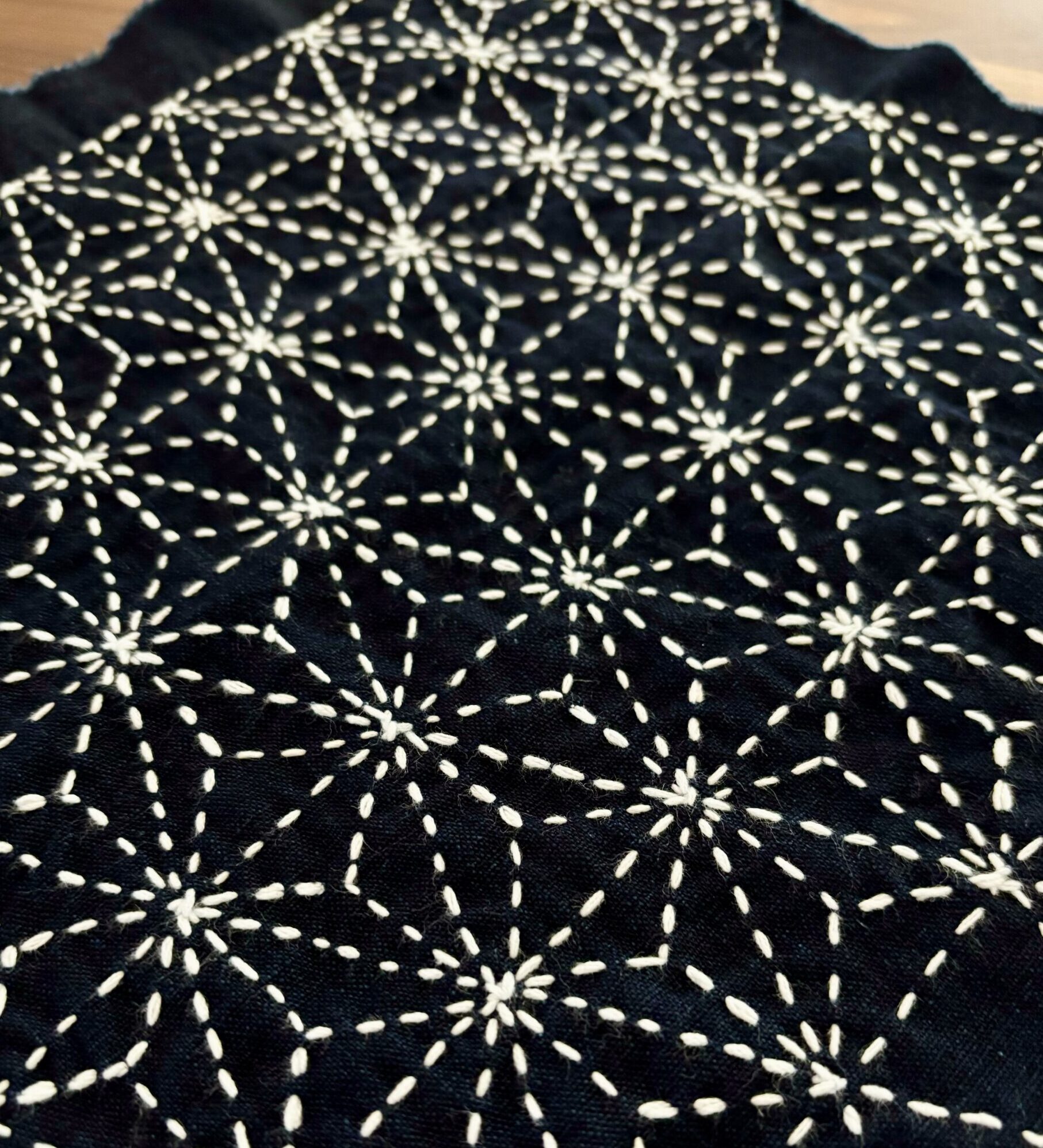
Leave a Reply